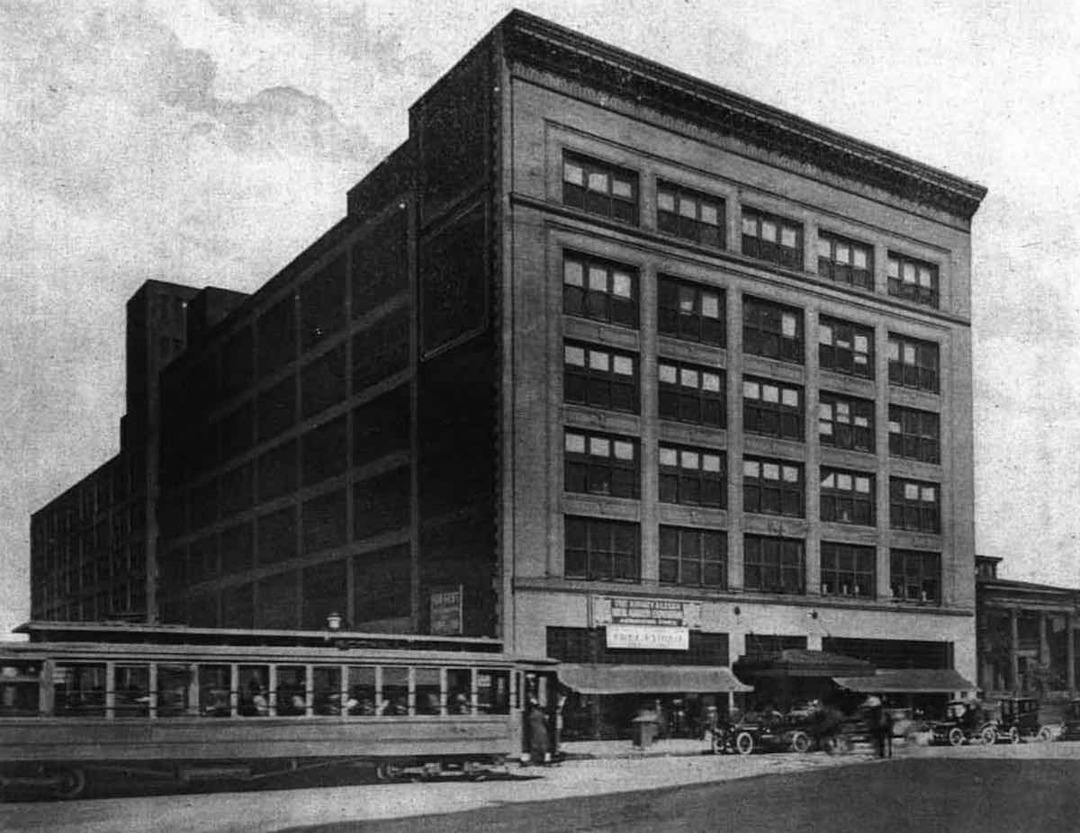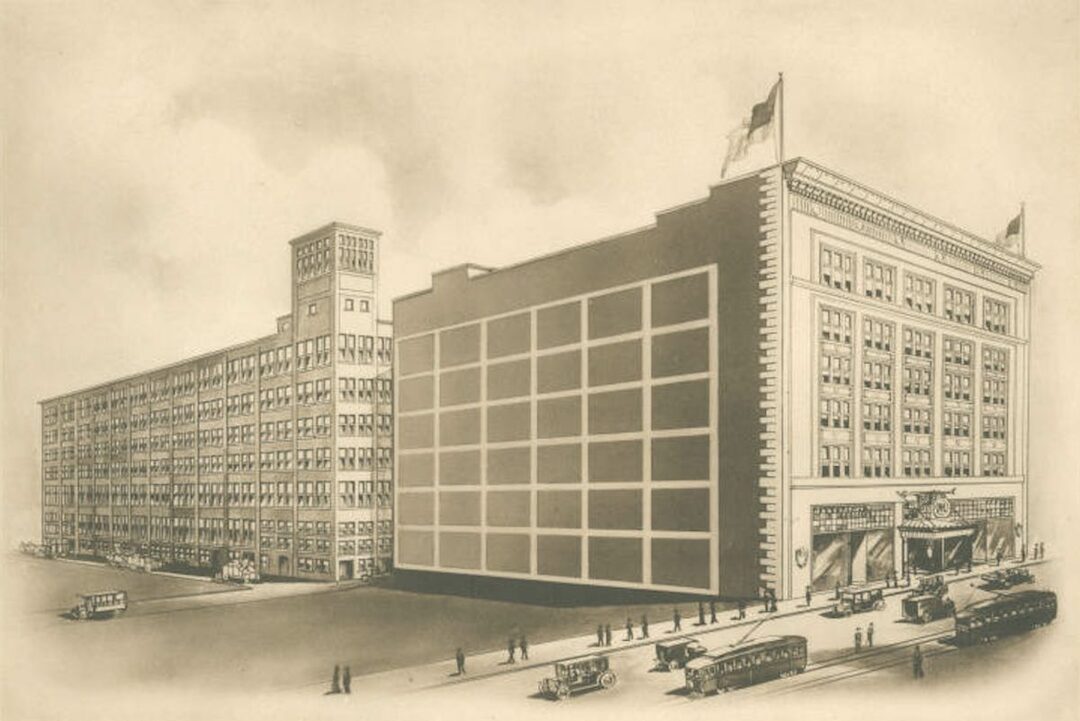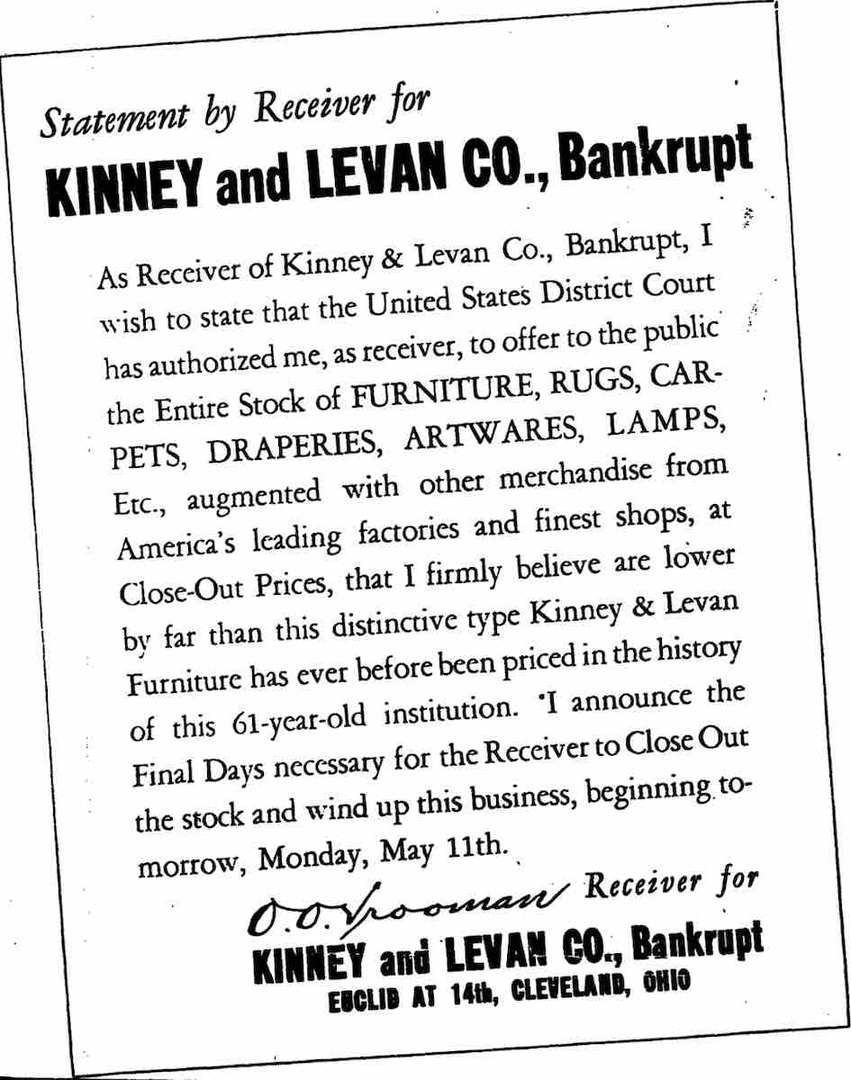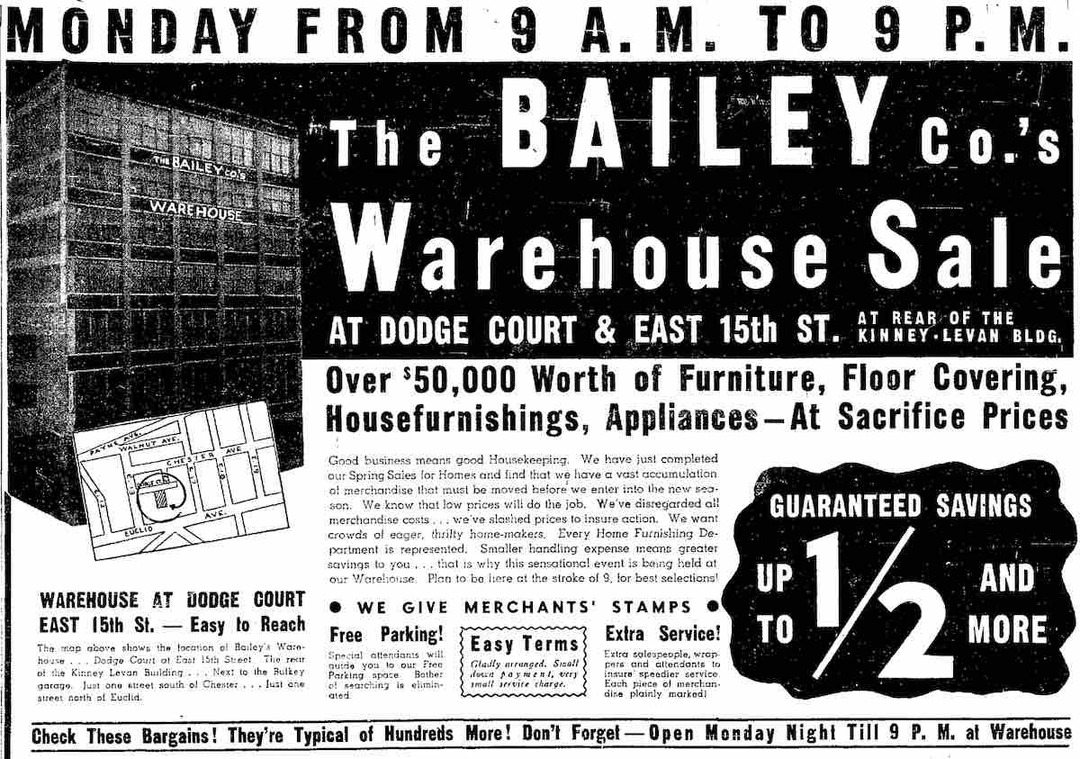
At 79 years old, George W. Kinney had no time to stop to smell the roses—79 of them—that his employees had ordered for his birthday. He was too busy preparing for his store's biggest expansion in three decades.
In the depths of the Great Depression, downtown merchant George W. Kinney pressed forward with an air of confidence. He expanded the Kinney & Levan store at 1375-85 Euclid Avenue from a housewares store to a full-fledged department store for the home in 1932. Kinney's radical reorganization enabled him to display wares in individual rooms to suggest how they might appear in a shopper's own home. Between the store's support columns on the street level, he arranged tall backlit cabinets and mirror-topped tables displaying various table settings. But it was the third floor that generated the most excitement. There Kinney created an experience akin to touring European and American history museum period rooms. Twenty-eight furnished rooms were filled with furniture manufactured by the Robert Irwin Furniture Co. of Grand Rapids, Michigan, and decorated in period and contemporary styles. At the expanded store's preview for reporters, Kinney recalled how skeptics had scoffed at his decision in 1913 to move "so far out," noting with satisfaction that Playhouse Square had followed him uptown.
In 1873, twenty-year-old George W. Kinney, the son of a longtime trustee of Oberlin College, had traveled from Oberlin to Cleveland to sell several empty oil barrels to William H. Doan, who co-owned several Cleveland refineries that produced carbon oil, naphtha, and gasoline. On Doan's advice, Kinney decided to try his luck selling kerosene lamps, first from a building on the north side of Public Square, and quickly expanded to china, glassware, and lamps. In 1883, he partnered with merchant Aaron B. Levan to buy out the Bowman Bros. & Levan housewares store at 120 West Superior Street across from where the Perry-Payne Building was built five years later. Then, in 1885, they moved to a much larger building at 219-221 Bank Street (later 1427-37 West 6th Street). The business soon served a four-state area with four traveling salesmen and fifteen store employees.
Outgrowing its store on West 6th, Kinney & Levan moved in 1913 to a new six-story building leased from Samuel, William G., and Katherine Mather on upper Euclid Avenue, becoming the easternmost of downtown's major retailers. The building replaced the home where Samuel Mather had lived before moving farther east on Euclid Avenue. In the new terra-cotta faced building designed by Walker & Weeks, the store staked its claim as the nation's largest housewares store—"The housewife's paradise," averred George Kinney. The space was immense, so large, Kinney liked to point out, that he had no need of golf because he got plenty of exercise pacing the 450 feet between Euclid Avenue to Dodge Court multiple times each day. The store occupied the first four floors and basement, as well as the rear half of the fifth floor. The Cleveland Public Library occupied the front half of the fifth and all of the sixth floor until its new Beaux-Arts edifice was completed on Superior in 1925. The store featured five model kitchens and literally acres of floor space with a "bewildering" assortment of china, glassware, silverware, crockery, cutlery, lamps, appliances, and more.
Following A. B. Levan's death soon after the move to Euclid Avenue, Kinney continued to update his store. He opened a portion of the space to the Likly & Rockett Trunk Co. in 1916, and two years after that he added the Oriental Studio, where costumed Chinese women served tea to customers. In 1928, Kinney bought the property he had originally leased. In addition to recasting his store's "interior frontier," which historian Alison Isenberg has identified as an approach to helping "Main Street" survive the Depression, four years later, Kinney took up interior decorator services for other businesses and even decorated the "Home in the Sky" and "House of Tomorrow," two model "houses" in the Builders' Exchange Building, part of the Union Terminal Group.
The weight of economic conditions may explain why, in spite of having a payroll of 330 employees and a national reputation for its vast selection of merchandise, the Kinney & Levan Company leased out considerable space in its building starting in 1934. The lessees included the Intown Club, Foster Frocks, Guenther Art Galleries, and Poyner's Beauty Shop. The following year, Stouffer's restaurant moved into the former Likly & Rockett space. Finally, in 1936, months after George Kinney died, Kinney & Levan descended into bankruptcy and was sold at auction the following year. At the time of Kinney's passing, he and W. B. Davis of Lindner & Davis were the city's oldest downtown merchants.
After the Kinney & Levan Building's sale, its rear half was leased to Bailey Co. department store for its warehouse starting in 1937. The street-facing front half included a succession of various businesses. WJW radio station arrived in 1944, and in its studio five years later deejay Alan Freed coined the name "rock 'n' roll" for the music he played. While WJW departed to a location east of the Hanna Building in 1957, Stouffer's held on until 1972, when the reduction of foot traffic after the closing of the Playhouse Square theaters finally forced it to close.
Despite the gradual restoration of the theaters over the next two decades, the old Kinney & Levan building languished before being donated to the Playhouse Square Foundation in 1998. A decade later it found new life as the home of Cleveland's National Public Radio affiliate. Though he surely would have lamented the disappearance of retail, Kinney might also have appreciated the building's new name—Idea Center. After all, it had been his "idea center" too.
Images

















